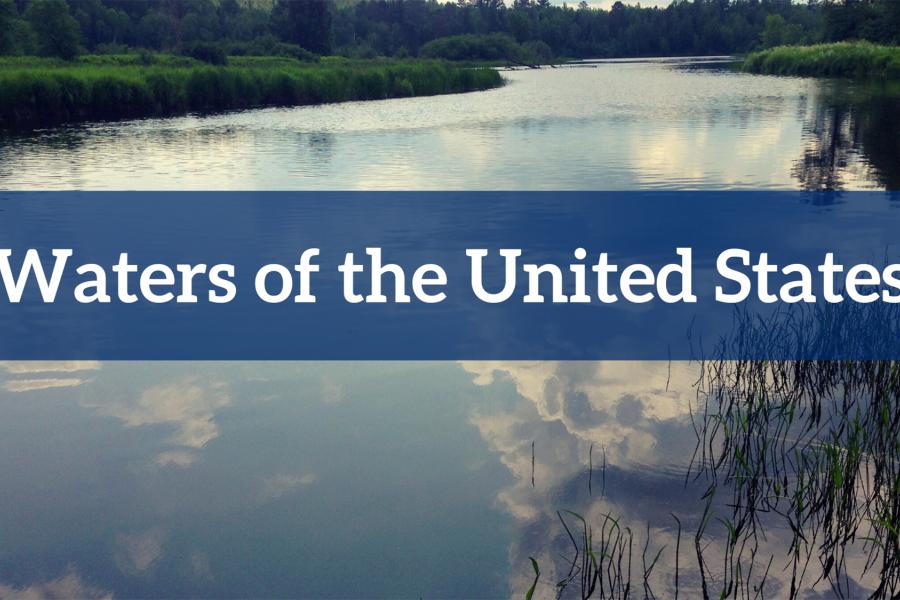What the new 'Waters of the US' rule means for local governments

By Carolyn Berndt
NLC Sustainability Director
In December, the U.S. Environmental Protection Agency (EPA) and the U.S Army Corps of Engineers (Army Corps) released a new final rule on which waterbodies are federally regulated as “waters of the U.S.” (WOTUS) under the Clean Water Act.
This Biden Administration rule represents the third such rule to define and clarify which waterbodies are considered “waters of the U.S..” Previously, the 2015 Obama Clean Water Rule and the 2020 Trump Navigable Waters Protection Rule were struck down by the courts. One of the goals of the agencies with this rule is to establish a “durable” definition, which has been the subject of long-standing confusion and uncertainty following Supreme Court rulings in 2001 and 2006.
With this new rule, the regulations revert back to those in place “pre-2015”—meaning those in place in 1986 with key changes to align with the 2001 and 2006 U.S. Supreme Court rulings.
Here are four key things for local leaders to know about the Revised Definition of “Waters of the United States.”
One of the controversial pieces of the WOTUS rulemakings has been the determination on wetlands. Under this new rule, wetlands and other water bodies that meet either of the judicially created tests would be regulated under the Clean Water Act:
- Being “relatively permanent,” standing or continuously flowing or with a connection to larger waterbodies; or
- Having a “significant nexus” connection or effect on larger waterbodies.
While the Obama rule greatly expanded the number of waterbodies federally regulated with its definitions, including placing distance limits on how far wetlands and other waterbodies could be from larger waters and be covered under the Clean Water Act, the Trump rule narrowed federal jurisdiction and instead relied on the States to offer protections for important waterbodies. This new rule falls someplace in the middle.
In a joint comment letter to EPA and Army Corps in Feb. 2022, NLC urged the agencies to make public and private stormwater control features and other municipally-owned facilities, particularly those related to drinking water, wastewater and stormwater control features, explicitly excluded under the final rule, as was in both the Obama and Trump rules.
For example, the 2020 Trump rule stated that, “stormwater control features constructed or excavated in upland or in non-jurisdictional waters to convey, treat, infiltrate, or store stormwater runoff” were not “waters of the U.S.” In leaving this language out of this new rule, the agencies state that including the exclusion would not be consistent with the pre-2015 regulatory regime. The agencies further state that they will continue to assess jurisdiction of stormwater control features on a case-by-case basis and note that some features may fall under other exclusions, such as ditches.
The new rule also provides exclusions for wetlands that were converted to cropland before 1985, ditches carved wholly in dry land that don’t carry relatively permanent flow, and artificial lakes and ponds.
Any existing AJD (except those issued under the Trump rule) will remain valid to support regulatory actions, such as permitting, until its expiration date, unless one of the criteria for revision is met or the recipient asks the Army Corps to issue a new AJD.
For any currently pending or future permit action intending to rely on a Trump rule AJD, the Army Corps will discuss with the applicant whether the applicant would like to receive a new AJD under this new rule to continue their permit processing or proceed in reliance on a preliminary jurisdictional determination or “no JD whatsoever.”
Trump rule AJDs issued prior to the rule being vacated that are not associated with a permit action (also known as “stand-alone” AJDs) will remain valid until their expiration date unless one of the criteria for revision is met or the recipient requests that a new AJD be provided.
A pending U.S. Supreme Court Case could leave this rule in limbo.
This new “waters of the U.S.” rule will be effective 60 days following publication in the Federal Register.
In October 2022, the U.S. Supreme Court heard oral arguments in the case of Sackett v. EPA, in which the court will decide the proper test for determining when wetlands are “waters of the U.S.”
NLC filed an amicus brief in the case arguing that municipal water infrastructure is not a WOTUS. The Supreme Court will issue its ruling before the end of the term in June.
It’s possible the U.S. Supreme Court ruling could come before the effective date of the rule. Additionally, the opinion could render this final rule moot or create a new test for determining jurisdiction, among other outcomes.
At the outset of the EPA and Army Corps rulemaking process, the agencies stated they would undertake a two-step process on WOTUS. This final rule represents step one. Depending on the Supreme Court ruling, the agencies could pursue a second rule defining “Waters of the United States” and consider revisions to this rule.

